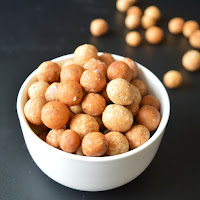Millets are becoming
very popular now and many are replacing rice with millets. Millets are said to
protect your heart health, lower type II diabetes, lowers risk of cancer,
boosts respiratory health, improves your immune system etc.
I have been trying
out recipes using different millets for sometime now. Millets can easily
replace the rice in most of the recipes like pongal, upma, kozhukattai, idly,
dosai etc. So here is my first post using millets. Hope to post a few more
soon.
For this
Kozhukattai, I have followed the same procedure as my upma Kozhukattai. The
only thing is it requires a little more water to cook than the rice rava. Also,
I find making kozhukattai with millets easier, as they are already very tiny
and in the rava form. So no need to make rava.
Makes around 30 medium sized Kozhukattais
What you'll need
- Samai/Little Millet – 2 cup
- Scraped Fresh/frozen coconut – 1 cup
- Salt to taste
- Green Chillies – 3 to 4
- Curry Leaves – few sprigs
For tempering
- Coconut Oil – 1.5 tbsp
- Mustard Seeds – 1 tsp
- Channa Dal/Kadala Paruppu – 1 tbsp
- Urad dal/Ulutham Paruppu – 2 tsp
- Asafoetida/Hing – a generous pinch
Method
- Wash and carefully drain the samai/little millet and set aside.
- Heat a Kadai with oil, temper with mustard seeds, once they splutter, add the channa dal and urad dal and fry until the dals turn golden.
- Add the chopped green chillies, curry leaves and hing, mix well.
- Now add 6 cups of water. Also add the scraped coconut and salt to taste. Bring this to a rolling boil.
- Now add the little millet and mix well. Cook covered in low heat for 5 to 8 minutes or until the water is absorbed and the mixture resembles upma. Keep stirring once in a while.
- Transfer to a plate and let it and let it cool down a little.
- Wet you palms, and form golf ball sized balls or oval shape
- Place on a steamer or idly plate. Repeat with remaining mixture.
- Steam cook for 10 minutes.
Note:
- The mixture should not become too crumbly, then you will not be able to form balls.
- Don’t let the mixture cool too much, make the balls when warm.
- You could dry roast about 1/4 cup of Tuar dal and powder it along with red chillies and add it while the water is boiling along with the coconut. This also gives a good taste.
























